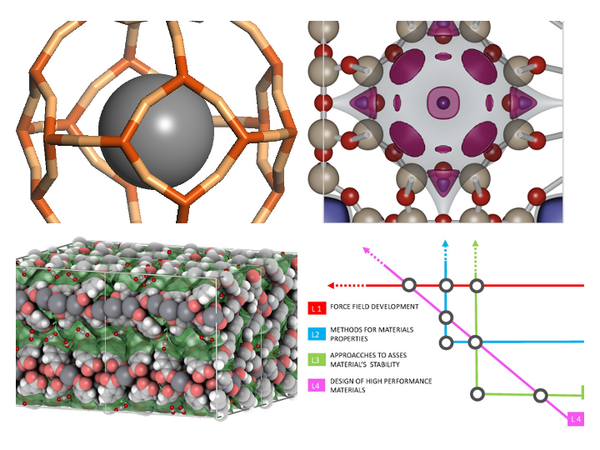
We aim at the study and rational design of multifunctional porous materials and complex molecules to meet the European Green Deal. We provide conceptual knowledge to bring reductions in energy consumption and pave the way for developing a long-term research strategy to design and 'invent' materials. We approach this research through four interrelated lines. The first line focuses on the development of force fields. The screening of structures and the use of Machine Learning let glimpse the enormous potential of molecular simulation, but the lack of efficient and transferable force fields is the Achilles heel that greatly limits this potential. There is a very urgent need to develop force fields to overcome limitations such long parameterization time, non-reproducible parameterization and trade-off between transferability and accuracy.
We are also developing advanced high-throughput methods to automatically calculate material surface properties. This second line tackles the current limitations in the calculation of adsorption isotherms, diffusion properties, adsorption (and absorption) energetics, gas and liquid transport and reaction (for example, water splitting, carbon dioxide dissociation, syngas processes). In a third line we devise innovative approaches to assess materials stability via molecular simulation. While the inclusion of criteria such as mechanical, thermal, and water stability is crucial for any application of porous nanostructured materials, this is not addressed in existing high-throughput screening approaches. This requires methodological development to produce accurate data at low computational cost. The fourth line focuses on the Identification and design of high-performance materials. In this line we use computer simulations in combination with Machine Learning to identify and design multifunctional materials for optimizing energy devices such batteries and solar cells and for crystals and mixed matrix membranes to be used for optimizing processes (for example hydrogen production, natural gas and biogas purification).